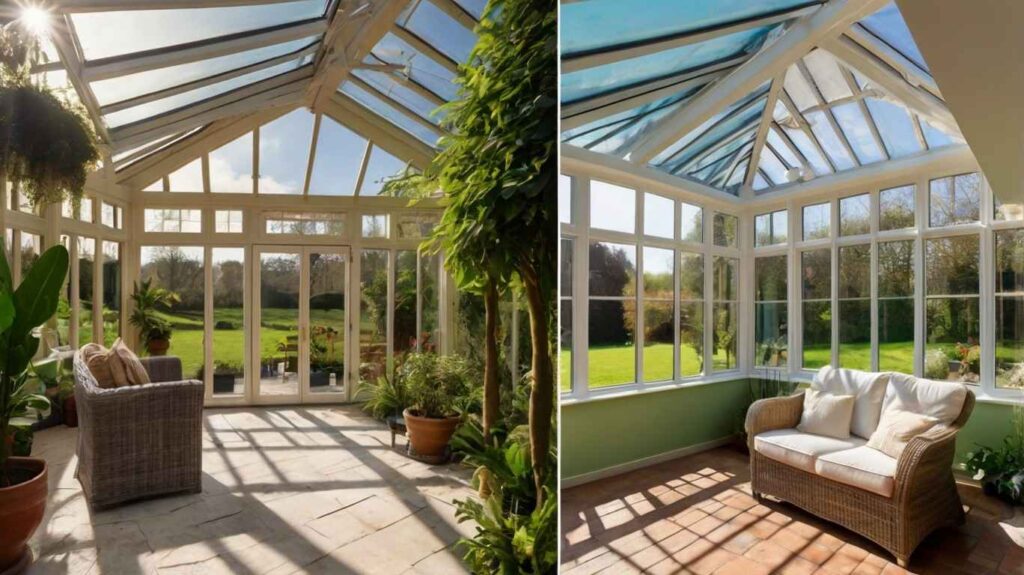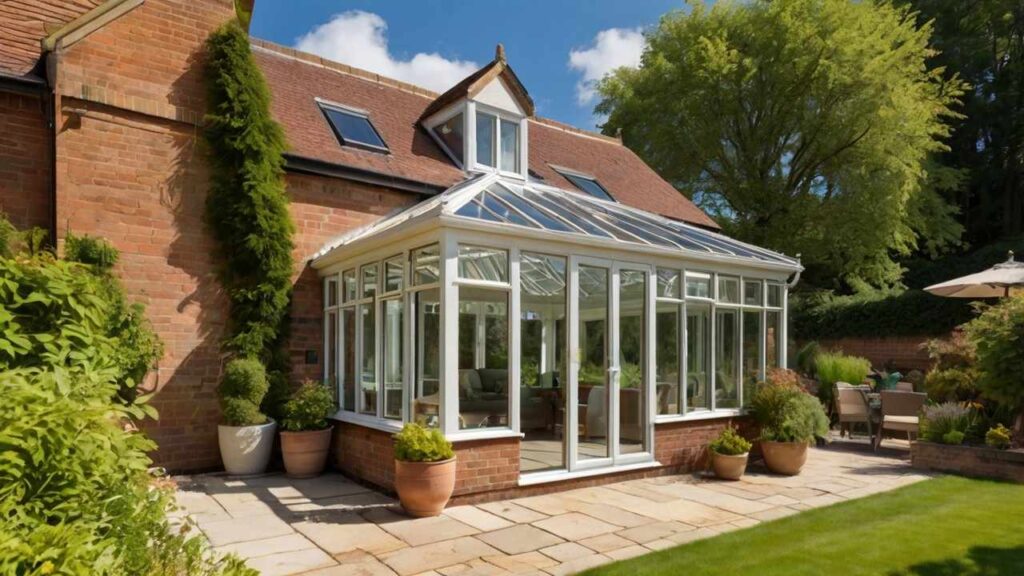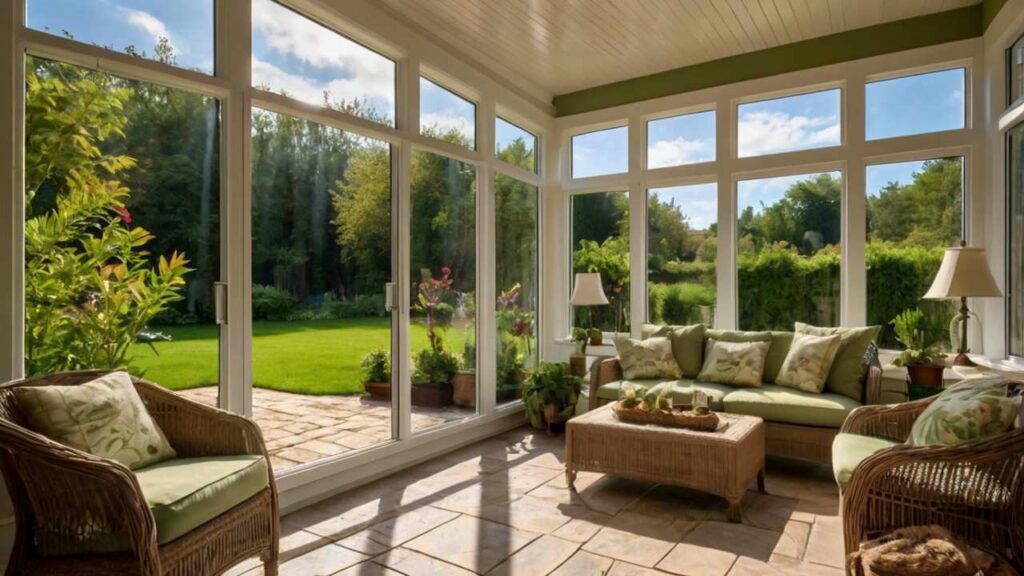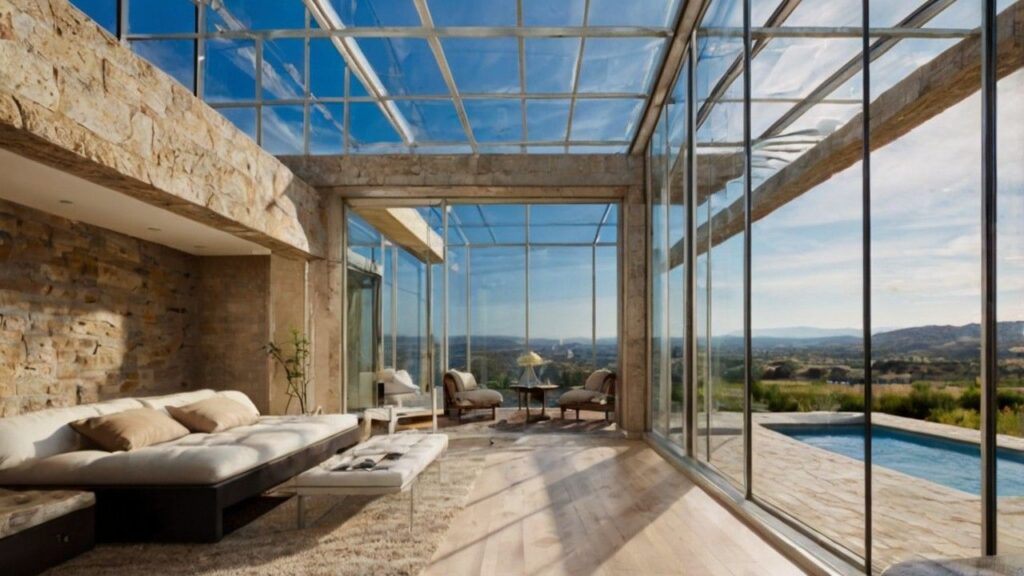Sunroom vs Conservatory: Complete Guide To Costs, Design, And Living Benefits
Summary: Choosing between a sunroom and conservatory depends on several factors. Sunrooms are versatile and usable year-round in most climates. They match most home styles and often save energy. Conservatories offer a stronger connection to nature and have a distinct, elegant look. However, they may be less comfortable in extreme weather. Consider your local climate, budget, planned use, and long-term goals when deciding. This guide will walk you through all important aspects to help you make an informed choice.
Thinking about adding space to your home? Sunrooms and conservatories are two popular options. These additions make homes more useful and enjoyable. They provide space for relaxation, entertainment, and nature viewing. But which is better for your home and lifestyle? This guide compares sunrooms and conservatories in detail. We’ll help you choose based on your specific needs, budget, and local climate.
Why Should You Listen to Us?
Our UK-based team helped over 1M homeowners save up to 40% on home improvement quotes since 2006. By using our free no-obligation quote comparison service, you will receive the most competitive quotes from vetted and accredited local companies.
What Is a Sunroom?
Definition and Purpose
A sunroom is a room with many windows attached to a house. It lets in plenty of natural light. Sunrooms combine indoor comfort with outdoor views. You can use them all year in most climates.
Key Features of Sunrooms
Sunrooms have good insulation. This keeps them warm in winter and cool in summer. You can use a sunroom for many purposes. It works as a living area, office, or dining space. Sunrooms are designed to match your house’s style. Many have heating and cooling systems for year-round comfort.
Types of Sunrooms
There are several types of sunrooms:
- Three-season rooms: Used in spring, summer, and fall. Less insulation than year-round sunrooms.
- Four-season rooms: Fully insulated and climate-controlled for year-round use.
- Solarium: A sunroom with a glass roof and walls.
- Screened porch: An enclosed porch with screens instead of glass windows.
Each type offers different benefits and costs. Choose based on your climate and how you’ll use the space. For more detailed information on sunroom types, visit the National Association of Homebuilders resource page on home additions.
What Is a Conservatory?
Definition and Purpose
A conservatory is a room made mostly of glass. People once used them mainly for growing plants. Now, they’re popular home extensions. They create a unique space that mixes indoor and outdoor living.
Key Features of Conservatories
Conservatories have more glass than sunrooms, often including the roof. This makes them ideal for plants and nature lovers. They often have an elegant, old-fashioned design. However, they may be too hot in summer or cold in winter without special systems.
Types of Conservatories
Common conservatory styles include:
- Victorian: Rounded shape with a ridged roof.
- Edwardian: Square or rectangular with a flat front.
- Lean-to: Simple design that leans against the house wall.
- Lantern: Features a raised centre roof section.
Each style has a distinct look. Choose one that complements your home’s architecture. The Royal Horticultural Society offers excellent guidance on choosing and maintaining conservatories for plant enthusiasts.
Thoroughly Vetted Professionals
Every supplier in our network goes through a strict vetting process, including credit checks and accreditation verification.
Comparing Sunrooms and Conservatories
Design and Looks
Sunrooms have modern designs. They blend well with most home styles. You can choose different window types and sizes. This helps match your home’s look.
Conservatories have classic designs. They often look like elegant glass structures. They use lots of glass to let in maximum light. This creates a striking visual effect.
Building Materials
Sunrooms use a mix of regular building materials and glass. Frames can be wood, vinyl, aluminium, or fibreglass. Each material has pros and cons in cost, durability, and looks. Sunrooms also have some solid walls for better insulation.
Conservatories are mostly glass, including the roof. Frames are often wood, plastic, or aluminium. The choice affects the conservatory’s look, price, and maintenance needs.
Temperature Control and Energy Saving
The difference between a sunroom and conservatory becomes clear when comparing temperature control. Sunrooms stay comfortable year-round with proper insulation. Their design includes energy-saving features. Many homeowners choose a sunroom over a conservatory for better climate control.
Conservatories need more heating and cooling attention. Temperature changes affect conservatories more than sunrooms. The glass construction of a conservatory works best in mild weather. Installing both heating and cooling systems helps manage temperature swings.
Uses and Functions
A sunroom and conservatory serve different purposes. Sunrooms work as everyday living spaces. People use sunrooms for dining, working, or relaxing. The controlled climate makes sunrooms practical for furniture and electronics.
Conservatories excel as plant spaces and nature rooms. Their glass design creates an ideal environment for indoor gardens. Many homeowners combine features of a sunroom and conservatory to get both benefits.
Cost Considerations
The cost difference between a sunroom and conservatory affects many decisions. Sunrooms have higher upfront construction costs. Their complex design and insulation requirements increase initial expenses. However, sunrooms often return this investment through energy savings.
Conservatories typically cost less to build initially. Their simpler glass structure requires less material. But conservatory owners often spend more on heating and cooling. Long-term maintenance costs for a sunroom and conservatory also differ significantly.
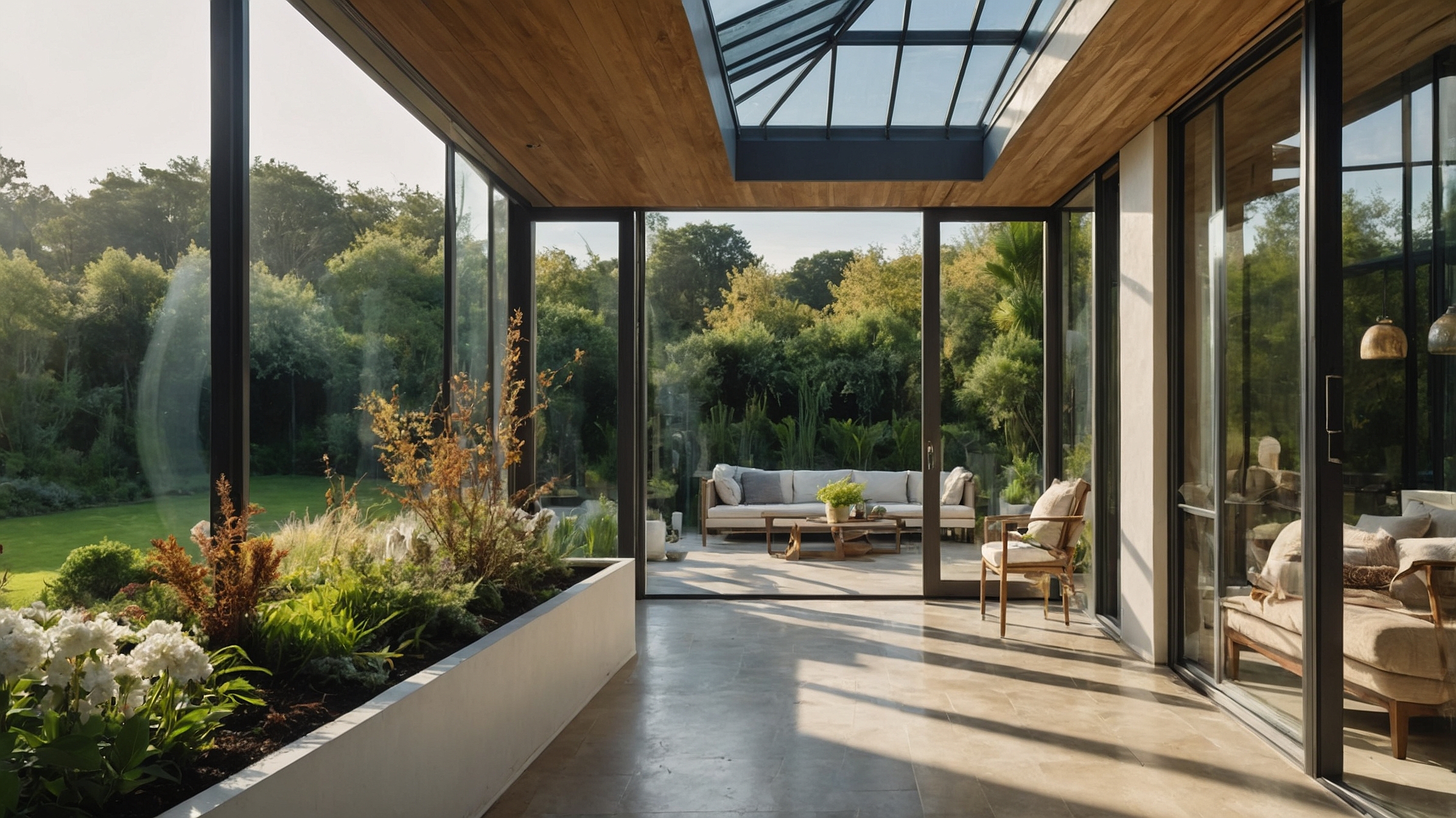
Things to Consider When Choosing
Weather and Location
Your local weather affects which option works better. A sunroom and conservatory perform differently in various climates. Cold regions benefit more from a sunroom’s insulation. Mild climate zones work well for either a sunroom or conservatory.
Hot areas need careful planning for both options. A sunroom provides better heat protection. Conservatories may need extra cooling systems in warm climates. Consider your region’s weather patterns when choosing between a sunroom and conservatory.
How You’ll Use It
Think carefully about your plans for the space. For year-round use as a living area, choose a sunroom. It’s more versatile for daily activities. For an indoor garden or nature retreat, pick a conservatory. It provides the best environment for plants.
Your Home’s Style
Consider how the addition will look with your house. Sunrooms match many home styles easily. They can be designed to blend seamlessly. Conservatories stand out more. They add a distinct feature to your home. Make sure this fits your overall house design.
Budget and Long-Term Value
Think about both current and future costs. Include building, maintenance, and energy expenses. Sunrooms often add more to home value. They appeal to a wide range of buyers. Conservatories may add unique charm but appeal to fewer buyers.
Building Rules and Permits
Check local building regulations. Sunrooms and conservatories may have different rules. Some areas limit glass structures or have energy efficiency requirements. Make sure your choice complies with local laws. The International Code Council provides information on building codes that may affect your project.
Compare Quotes
Get instant quotes from different contractors for sunrooms and conservatories. Each quote should list all materials and labor costs. Ask about the project timeline and warranty coverage. Make sure contractors include costs for heating and cooling systems. Some contractors may offer discounts during off-peak seasons. Keep in mind that the cheapest quote isn’t always the best choice.
Check Planning Permissions
Contact your local planning office for planning permission before starting construction. Many areas require permits for both sunrooms and conservatories. Some neighborhoods have strict rules about home additions. Historical districts may limit your design choices. The permit process can take several weeks. Factor these timeframes into your project schedule.
Accredited Professionals, thoroughly vetted through reference and credit checks. Registered with self-certification schemes, guaranteeing high standards of workmanship.
Pros and Cons: Sunroom vs Conservatory
Sunroom Pros
- Usable year-round in most climates
- Energy-efficient with proper insulation
- Versatile space for many activities
- Blends well with existing home design
- May increase home value significantly
- Comfortable in various weather conditions
Sunroom Cons
- Higher initial construction costs
- Less direct connection to outdoors
- Construction may take longer
- May require zoning approval in some areas
Conservatory Pros
- Unique, elegant appearance
- Strong connection to nature
- Ideal for plants and gardening
- Often quicker to build
- Can be less expensive initially
- Provides lots of natural light
Conservatory Cons
- Difficult to use in extreme weather
- Higher heating and cooling costs
- Requires more maintenance, especially for the glass roof
- May overheat in summer
- Less versatile for year-round activities
- Might not add as much home value
Making the Right Choice for Your Home
Consider Your Lifestyle
Think about how you’ll use the space daily for sunrooms and conservatories. Do you need a year-round living area? Or a seasonal space for plants? Consider your long-term plans for your home. Factor in your family’s needs and preferences.
Evaluate Your Home’s Style
Choose an addition that complements your home. Think about curb appeal and overall aesthetics. A well-matched addition enhances your home’s look and value.
Review Your Budget
Compare sunrooms and conservatories all costs involved. Include initial construction, ongoing maintenance, and energy expenses. Factor in potential increase in home value. Remember, the cheapest option isn’t always the best long-term investment.
Seek Expert Advice
Talk to architects familiar with both sunrooms and conservatories. Get quotes from several reputable builders for sunrooms and conservatories. Ask about energy efficiency and long-term costs. Consider hiring a home energy auditor for professional insight. The UK Department of Energy offers valuable resources on home energy efficiency that can guide your decision.
Save Up to 40% on Your Project
Focus on competitive pricing could save up to 40% and these savings might allow you to choose higher-quality materials or add extra features.
Maintenance and Upkeep
Sunroom Care
Clean windows and frames regularly. Use appropriate cleaners for your frame material. Check roof insulation annually for any gaps or damage. Inspect the roof and gutters, especially after storms. Maintain heating and cooling systems according to manufacturer instructions.
Conservatory Care
Clean glass often, including the roof. Use a telescoping brush for hard-to-reach areas. Check for leaks regularly, especially around roof seals. Ensure good ventilation to prevent mould and mildew. Monitor plant health and humidity levels. Consider using shades or blinds to control temperature and light.
Year-Round Usage
The usability of a sunroom and conservatory varies by season. Sunrooms offer consistent comfort throughout the year. Their insulation and climate control enable daily use. Many homeowners use sunrooms as primary living spaces.
Conservatories may have seasonal limitations. Extreme temperatures can restrict their use. Some owners mainly use conservatories during spring and fall. Others adapt their conservatory use to weather conditions.
Energy Efficiency Considerations
Energy use differs greatly between a sunroom and conservatory. Sunrooms maintain steady temperatures more efficiently. Their insulation reduces heating and cooling costs. Modern sunrooms often include energy-saving glass.
Conservatories use more energy for climate control. Their glass construction affects temperature regulation. Some newer conservatory designs incorporate energy-efficient features. Still, sunrooms typically outperform conservatories in energy savings.
To improve efficiency in either structure:
- Use double or triple-pane glass
- Install thermal curtains or blinds
- Choose energy-efficient heating and cooling systems
- Use ceiling fans to improve air circulation
- Consider adding a small fireplace for winter warmth
These steps can significantly reduce energy costs and improve comfort.
Renovation Options
Future changes differ between a sunroom and conservatory. Sunrooms allow various renovation options. You can update systems or change room functions easily. Their sturdy construction supports modifications.
Conservatories have limited renovation potential. Their glass structure restricts major changes. However, you can update fixtures and climate control systems. Consider future flexibility when choosing between a sunroom and conservatory.
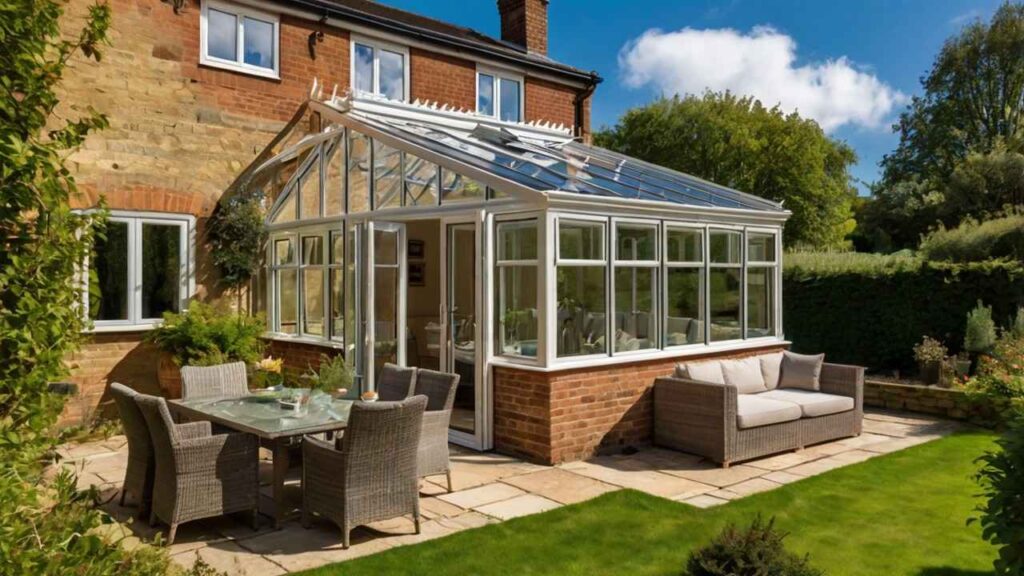
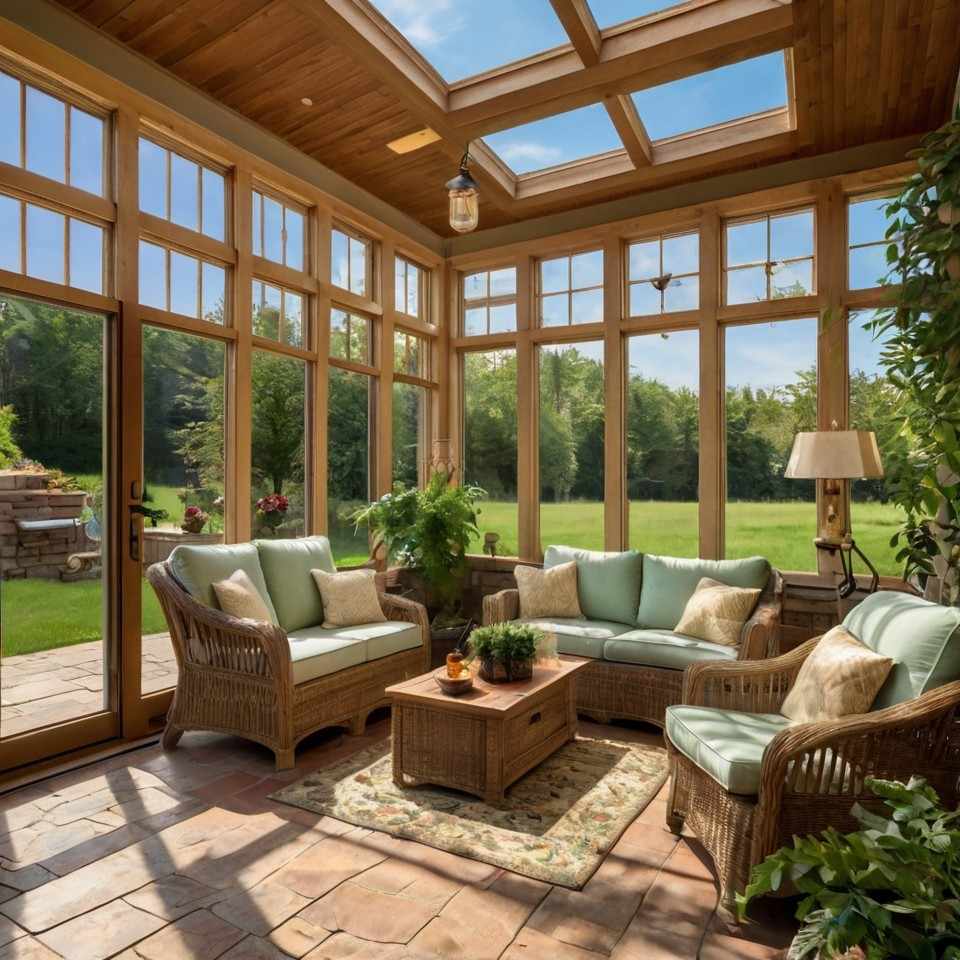
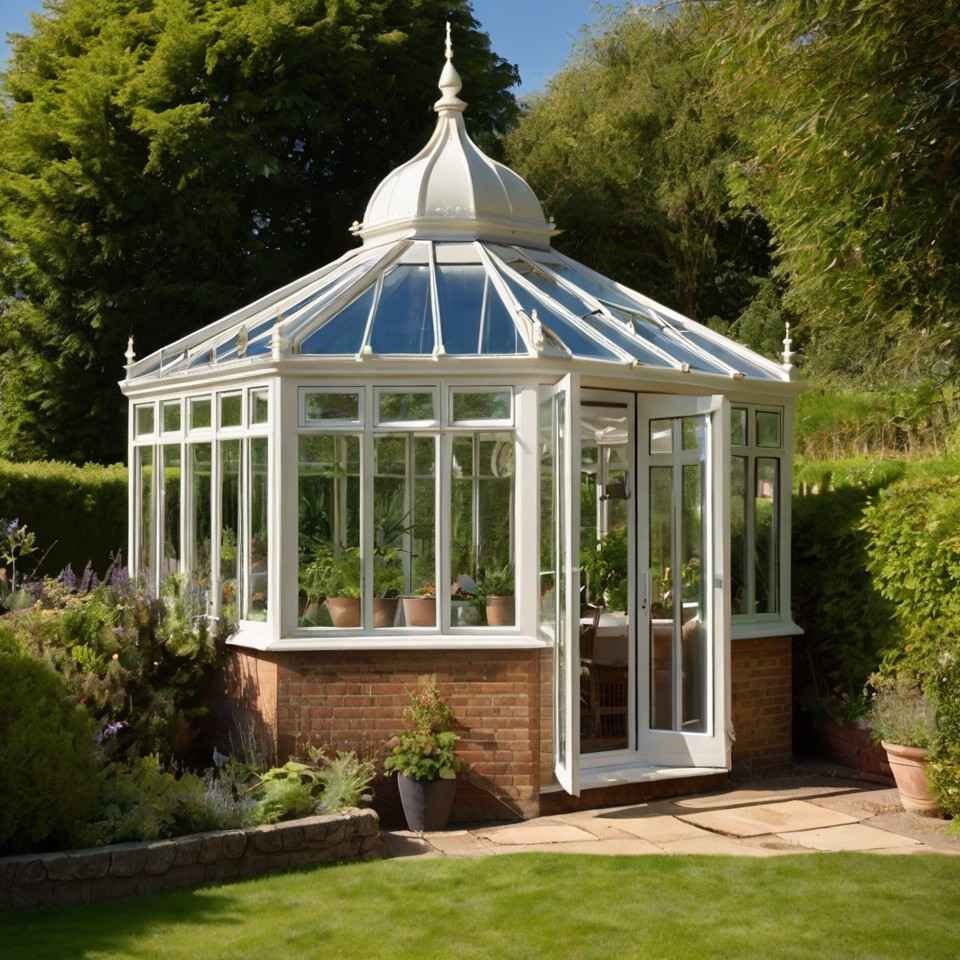
Impact on Home Value
Both sunrooms and conservatories can increase home value. However, their impact differs:
- Sunrooms often add more value. They’re seen as additional living space. This appeals to a wide range of buyers. A well-built sunroom can recoup 50-80% of its cost in home value.
- Conservatories add unique charm. They appeal to garden enthusiasts and nature lovers. However, their specialised nature may limit broad appeal. They typically recoup 50-60% of their cost in home value.
Consider your local real estate market when making your decision. In some areas, one option may be more valuable than the other.
Final Thoughts: Choosing between a sunroom and conservatory is a significant decision. It affects your home’s look, function, and value. Sunrooms offer year-round use and energy savings in most climates. Conservatories provide a strong nature connection and unique aesthetic appeal.
Your final choice depends on your specific needs and circumstances. Consider your local climate, budget, and how you plan to use the space. Think about long-term costs and benefits. Reflect on all the factors we’ve discussed in this guide.
Remember, either choice adds bright, enjoyable space to your home. It will increase your connection to the outdoors and likely add to your home’s value. Create a space that fits your lifestyle and enhances your daily living experience.
Take your time with this decision. Consult professionals if needed. With careful consideration, you’ll choose the option that best suits your home and family for years to come.
What’s the main difference between a sunroom and a conservatory?
Sunrooms are well-insulated, year-round living spaces with some solid walls. Conservatories are mostly glass structures, including the roof, originally designed for plants. Sunrooms offer more climate control, while conservatories provide a stronger outdoor connection.
Can I use a conservatory all year round?
It’s possible, but challenging without additional heating and cooling. Conservatories are prone to temperature fluctuations due to their glass construction. In extreme climates, they may be uncomfortable or unusable during certain seasons without costly modifications.
Are sunrooms energy-efficient?
Yes, sunrooms can be very energy-efficient. With proper insulation, energy-efficient windows, and climate control systems, sunrooms can maintain comfortable temperatures year-round without significantly increasing energy costs. They often help reduce overall home energy consumption.
Do I need planning permission to build a sunroom or conservatory?
Requirements vary by location. Many areas allow sunrooms and conservatories under “permitted development,” but size, height, and proximity to property lines may affect this. Always check with your local planning department before starting construction.
Which is better for growing plants: a sunroom or conservatory?
Conservatories are typically better for plants. Their all-glass design allows maximum light exposure and creates a greenhouse-like environment. However, modern sunrooms can also support plant growth with proper lighting and temperature control.
How much does it cost to build a sunroom or conservatory?
Costs vary widely based on size, materials, and features. Generally, basic sunrooms start around $10,000, while high-end models can exceed $70,000. Conservatories often fall within a similar range but can be more expensive for custom designs.
Can I convert my existing patio into a sunroom or conservatory?
Yes, many patios can be converted into sunrooms or conservatories. The feasibility depends on your patio’s structure, local building codes, and desired features. A professional assessment is recommended to determine the best approach.
How long does it take to build a sunroom or conservatory?
Construction time varies, but typically ranges from 2-6 weeks for prefabricated sunrooms or conservatories. Custom designs may take 8-12 weeks or longer. Factors like weather, permits, and complexity of the project can affect the timeline.
Will adding a sunroom or conservatory increase my property taxes?
It’s possible. Home additions that increase your property’s value may lead to higher property taxes. The impact varies by location and the specific nature of the addition. Consult your local tax assessor for accurate information.
UK-Based Support Team
Our knowledgeable, UK-based support team is familiar with local markets, regulations, and trends, so you’ll always get relevant and current advice.
Simply Fill in Your Details, and Receive Competitive Quotes from Accredited Companies Tailored to Your Project!
Our team brings almost two decades of expertise in the UK home improvements sector, giving you unique insights into its challenges and possibilities. Reaching out to us means tapping into a wealth of experience from home improvements experts who know the British market inside out.
All our suppliers are members of one or more consumer protection groups below.

We offer unparalleled market insights, a network of skilled professionals vetted, accredited and reference – credit checked who can handle projects of all sizes. Our knowledgeable UK-based team will ensure a smooth, informed experience from start to finish.
To send us your marketing and other service offers, please use the following email: offers@comparison.market


